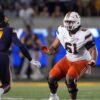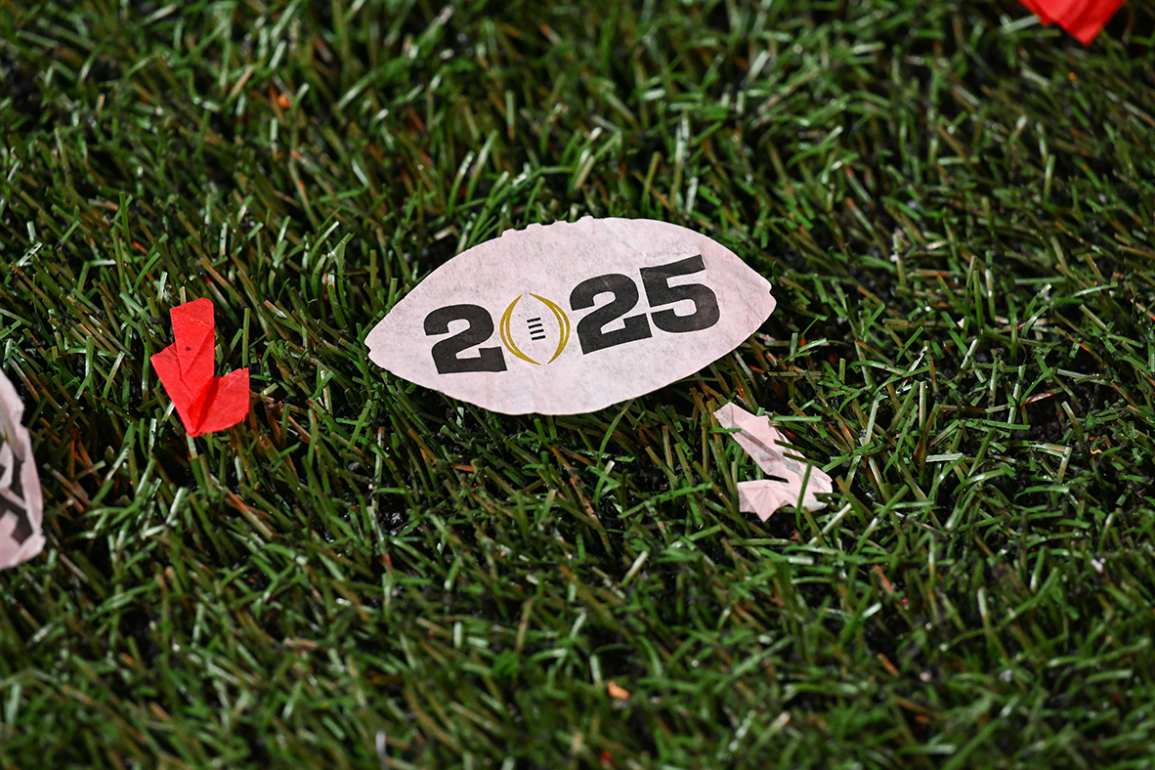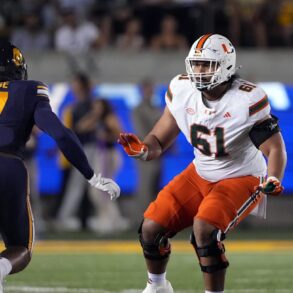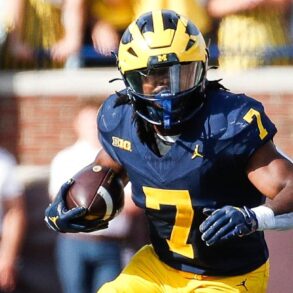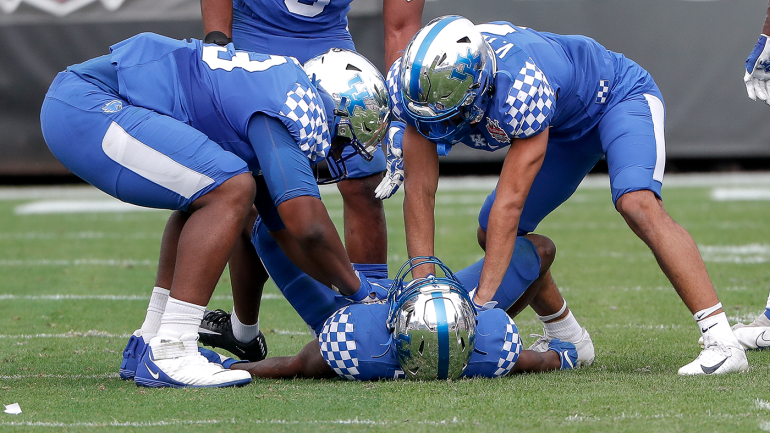
If you left coaches alone long enough, they were going to adopt the completely devious practice of faking injuries.
It’s not even worth calling it gamesmanship anymore. The idea was hatched in the back rooms of coaches’ meetings where anything is accepted — regardless of legality — to gain any kind of advantage.
For those of you not with your noses buried in House v. NCAA settlement court documents or College Football Playoff automatic qualifier scenarios, players faking injuries has become college football’s No. 1 offseason discussion.
The practice, hatched as an idea to slow down up-tempo offenses, has become like spilled coffee on a white carpet — an ugly stain that’s hard to clean. The NCAA Football Rules Committee will make feigning injuries its primary topic when it meets this week in Indianapolis.
“We’re at an inflection point,” said Steve Shaw, the head of that committee as NCAA secretary-rules editor. “We have to do something.”
As it stands, college football has descended into the lowest common denominator of entertainment — pro wrestling — that threatens the integrity of the game. And there’s enough erosion of that credibility lately.
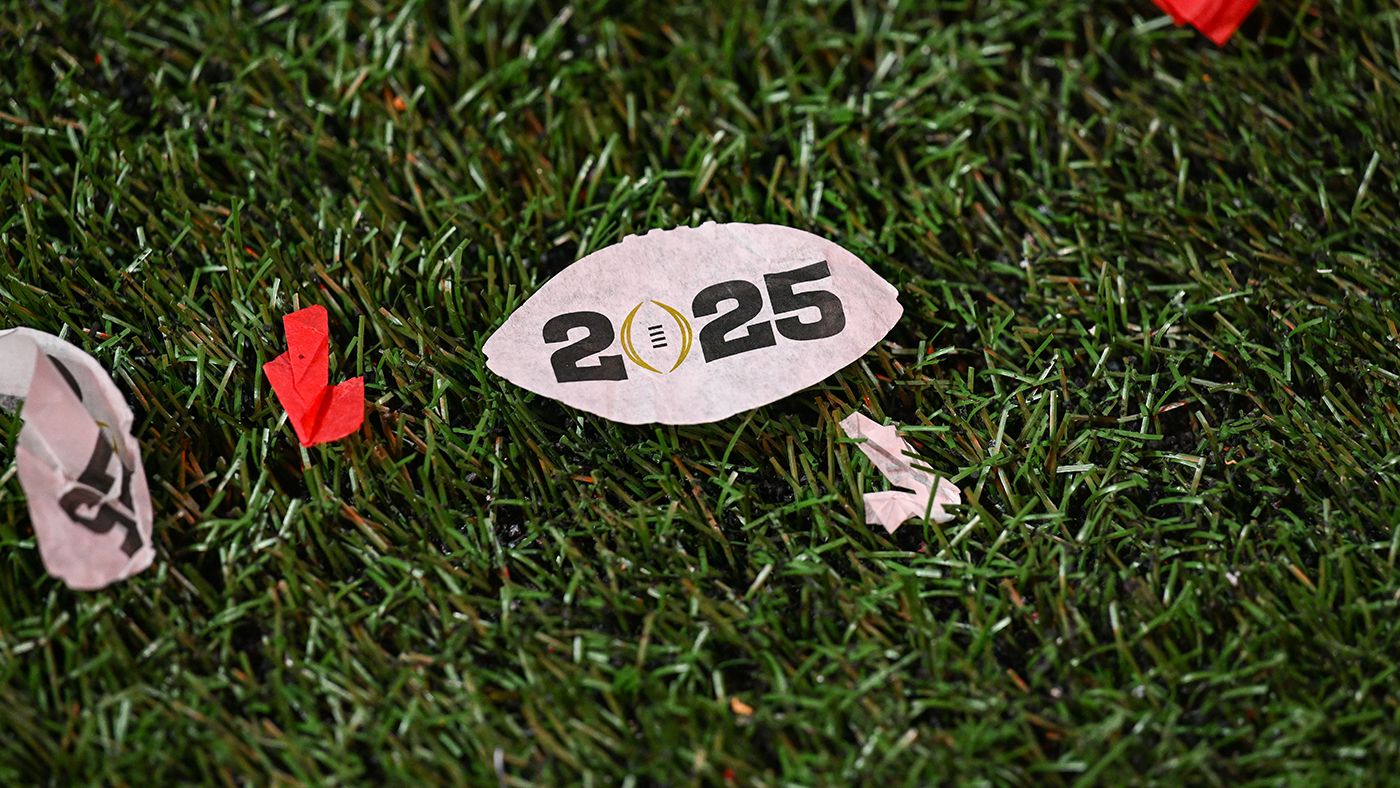
Start with the fact that coaches and players have become so blatant and fraudulent about it. You’d at least think they’d refine this sort of cheating during a practice period or something. What we’re getting are middle school productions with worse actors.
The SEC has stepped up and will penalize coaches found guilty with a public reprimand and fine — even a suspension, if necessary. SEC commissioner Greg Sankey sent out a memo to league members calling for an end to the “nonsense.” But that’s one conference in a broad, complicated space.
The American Football Coaches Association has formally proposed the most detailed solution yet. If there is a medical stoppage, the player in question would have to miss the rest of the series. If the player is then cleared medically, a team could use a timeout to get that player back on the field. There would be exceptions for players with helmet communications — quarterbacks, linebackers — to get back in after one play.
All of it seems logical and doable, but some nagging issues still linger. Am I the only one who is curious that the coaches who are responsible for the flopping epidemic … are the ones to clean it up? That’s casting an unfair wide net on the AFCA. Its executive director, Craig Bohl, has been proactive on the subject, but there is another side to this that has barely been discussed.
The rules committee is at least aware of the health and safety aspect of the AFCA solution. There will be injured players who feel compelled to stay on the field to keep from missing playing time. Don’t think it doesn’t happen now. In my research regarding head trauma over the years, it was frequently mentioned by experts that players would ignore or hide concussion symptoms so they wouldn’t be taken out. That’s dangerous.
Judge this any way you want: There will be no medical official in the room with the rules committee when flopping is discussed this week, a source told CBS Sports.
“If there comes an unintended consequence of players playing through an injury … shame on the coaches for creating a risk where heretofore none existed and imperiling the health and welfare of an athlete,” retired hall of fame Oklahoma trainer Scott Anderson told CBS Sports.
That’s the complicated part of what the rules committee has to consider during this inflection point. You can’t look into the soul of a player to determine his true intent.
Faking injuries evolved in the college game because of those up-tempo offenses. There is no such issue in the NFL because teams usually huddle. No one has kept track, but since the emergence of up-tempo offenses, that would make it about 15 years since injury faking has been present.
Remember when Nick Saban famously said, “Is this what we want the game to be?” in regard to no-huddle offenses? That was in 2012. Two years later, Saban hired Lane Kiffin as his offensive coordinator and installed the zone-read spread, which led to the recruitment of elite offensive players. The national championships kept flowing to Tuscaloosa because Saban had joined the up-tempo crowd.
Coincidentally, Kiffin remade his career and led Ole Miss to unprecedented heights. His players are among those who have been accused of going down as if tased under suspicious circumstances. Kiffin and Ole Miss, of course, are not alone — they’re just a symptom of a larger problem.
There are currently more questions than solutions. In the NCAA rulebook, flopping is officially referred to as “feigning injury.” It’s considered a breach of “The Football Code.” Rule 5B under the heading “Injury Timeout” says “feigning an injury” is dishonest, unsportsmanlike and unethical.
Now, try to eliminate all of that from the game.
“I’m as curious as anybody to see how the committee views it,” said one Power Four official.
That’s part of the issue, too. It is mandated the 12-person rules committee be made up of persons from all three divisions. Half of that group is from Division II and Division III, and they don’t necessarily have the same problems as Division I. That was proven in 2023 when Division III refused to adopt the first-down rule. (In 2024 DIII did adopt the rule, however.)
Flopping has been around for years. That it’s taken those same amount of years to figure it out is a reflection on the issue, those who have perfected it and those who can’t seem to wipe it out. It’s way past time to wipe out the flopping scourge.
“We’re kind of at a crossroads,” Shaw added. “If we just do nothing … I know that some feel it may continue to get worse.”
Well, there’s always those middle school productions.
This post was originally published on this site be sure to check out more of their content.


